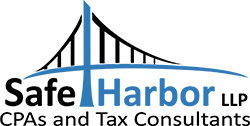The IRS issued final regulations implementing the Roth catch-up contribution requirement and other statutory changes to catch-up contributions made by the SECURE 2.0 Act of 2022 (P.L. 117-328). The regulations affect qualified retirement plans that allow catch-up contributions (including 401(k) plans, 403(b) plans, governmental plans, SEPs and SIMPLE plans) and their participants. The regulations generally apply for contribtions in tax years beginning after December 31, 2026, with extensions for collectively bargained, multiemployer, and governmental plans. However, plans may elect to apply the final rules in earlier tax years.
The SECURE 2.0 Act amended the catch-up contribution provision to allow an increased contribution limit for participants aged 60 through 63 and an increased contribution limit for certain SIMPLE plans. The final regulations provide that SIMPLE plans may allow participant to take advantage of one of these increased contribution limits, but not both. However, beginning with the 2025 calendar year, a SIMPLE plan that provides for increased contribution limits for all participants may instead permit participants attaining age 60 to 63 to contribute the full amount allowed for that age group.
With respect to mandatory Roth catch-up contributions for particpants whose income exceeds a statutory threshold, the final regulations allow 401(k) and 403(b) plans to automatically treat catch-up contributions as Roth for affected participants, provided an opt-out opportunity is offered. The final regulations do not include a rule allowing deemed Roth elections for all employees’ catch-up contributions, only for those employees whose income exceeds the threshold. In response to comments, the final regulations provide that deemed elections must cease within a reasonable period of time following the date on which the employee no longer meets the mandatory Roth threshold or an amended Form W-2 is filed or furnished to the employee indicating that the employee no longer meets the mandatory Roth threshold. As a result, Roth catch-up contributions made pursuant to the deemed election before the end of the reasonable period of time need not be recharacterized as pre-tax catch-up contributions. The IRS further indicated that the plan must be amended to implement deemed Roth elections, and that the deadline for adopting amendments implementing the SECURE 2.0 Act is generally December 31, 2026.
The final regulations provide two correction methods to address pre-tax contributions that should have been designated Roth. First, a plan may transfer pre-tax contributions to the participant’s Roth account and report the contribution as an elective deferral that is a designated Roth contribution on the participant’s Form W-2. This correction method is available only if the participant’s Form W-2 for that year has not yet been filed or furnished to the participant. Alternatively, the plan can directly roll over the elective deferrals that would be catch-up contributions if they had been designated Roth contributions (adjusted for earnings and losses) from the participant’s pre-tax account to the participant’s designated Roth account and report the rollover on Form 1099-R. Failures do not need to be corrected if the amount of the pre-tax elective deferral that was required to be a designated Roth contribution does not exceed $250, or if the participant was incorrectly treated as subject to the Roth catch-up contribution requirement due to a Form W-2 that is later amended.
IR-2025-91

